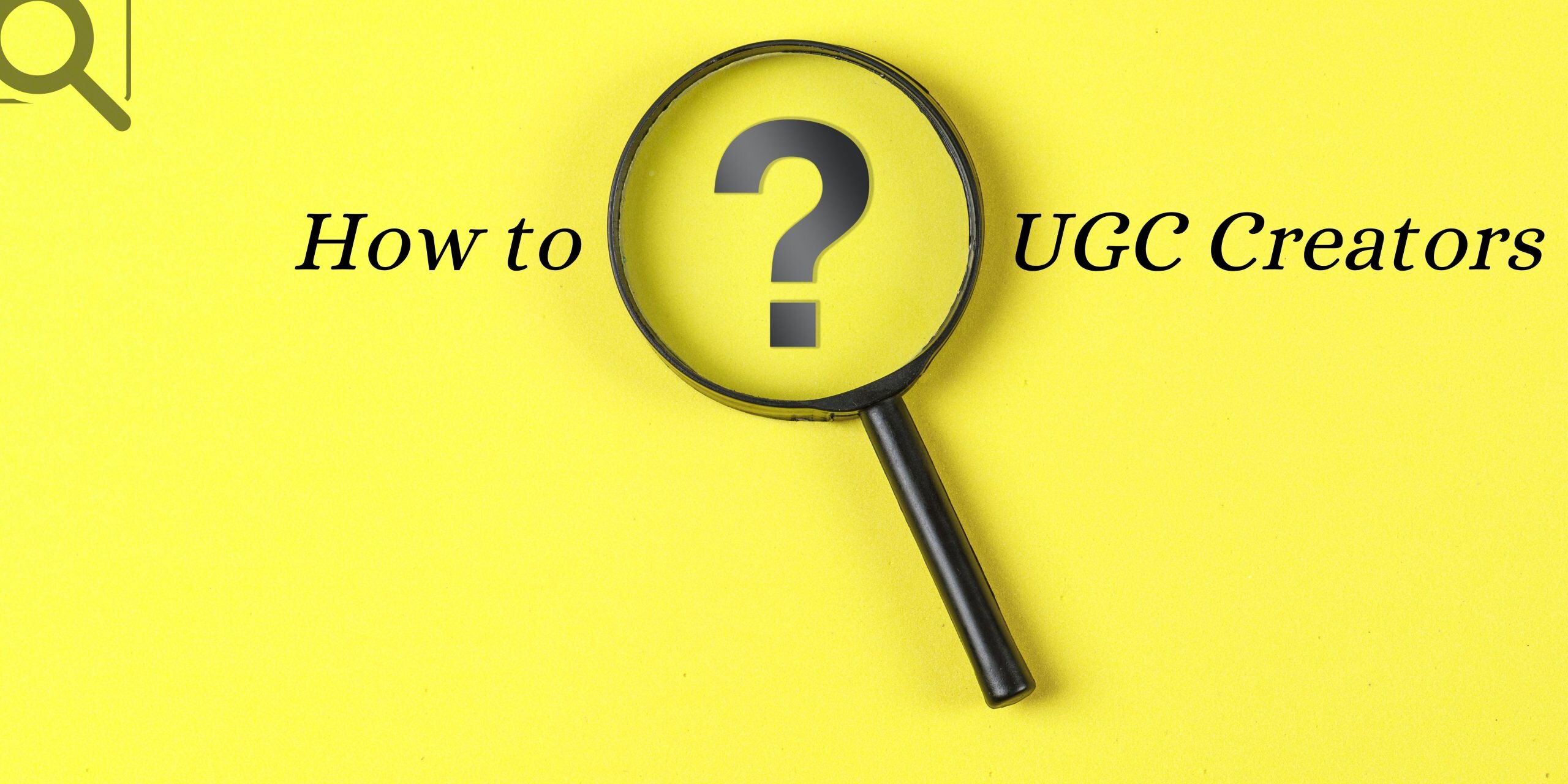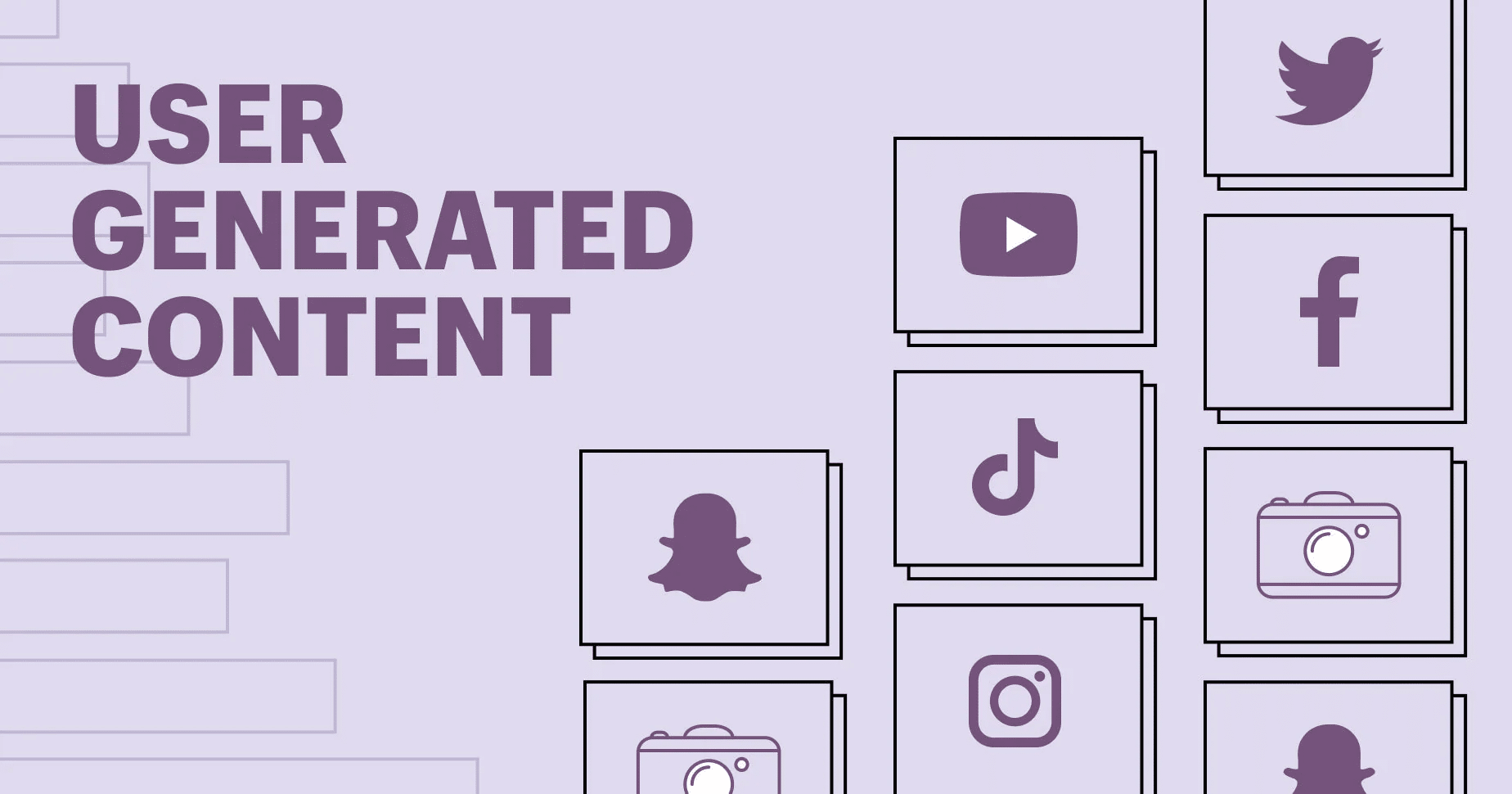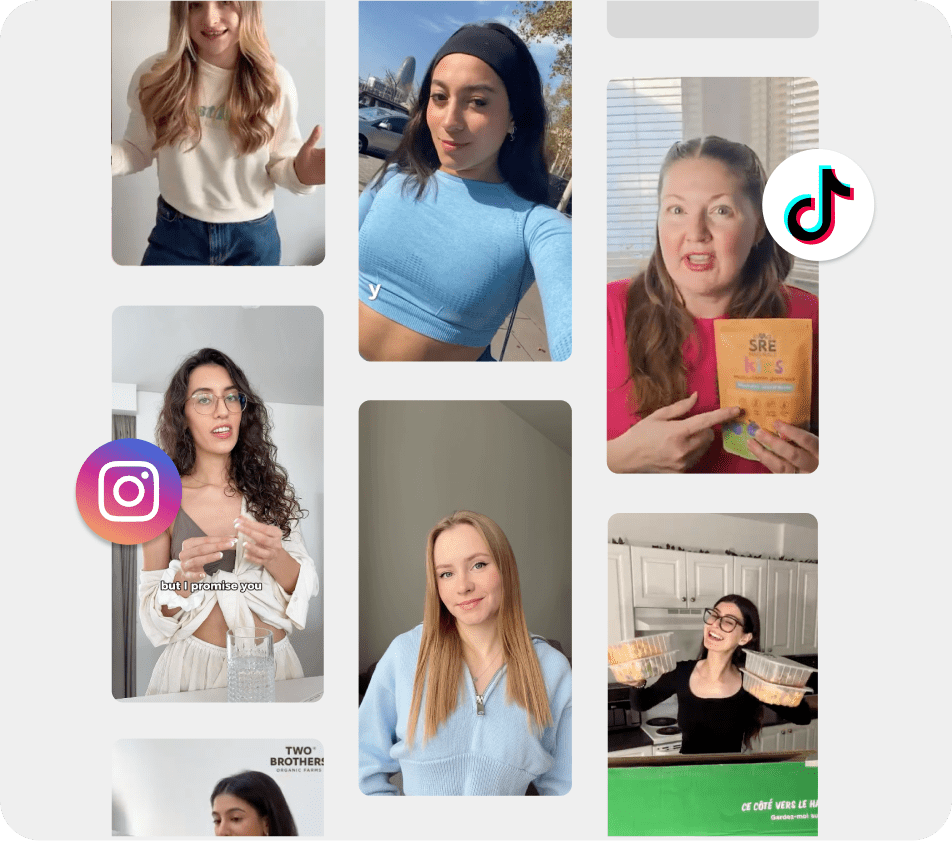Welcome to the clash of marketing titans: User-Generated Content vs. Influencers. In the marketing era of today, these two powerhouses vie for attention, each claiming its superiority in shaping consumer perceptions and driving brand engagement.
UGC embodies the voice of the masses, reflecting genuine experiences and opinions shared by everyday users. On the other side, IGC leverages the influence of individuals with substantial followings, wielding their authority to endorse products and services.
Let’s delve into this engaging debate, dissecting the strengths, weaknesses, and the impact of both UGC and IGC in steering the marketing narrative.
What is User Generated Content (UGC)?
User Generated Content, often abbreviated as UGC, is a treasure trove of content created and shared by users, not brands. It’s the photos, videos, reviews, comments, and social media posts made by consumers about products, services, or experiences they’ve encountered.
Think of UGC as the authentic, unfiltered voice of your audience. It captures real-life stories, opinions, and moments, showcasing genuine interactions with a brand or a product. This content isn’t crafted by marketing teams; instead, it’s the organic expression of the people who engage with what a brand offers.
In essence, UGC serves as a bridge, connecting brands with their audiences through shared experiences and narratives.
What is influencer-generated content (IGC)?
Influencer Generated Content, commonly known as IGC, revolves around content created by individuals with significant online followings, known as influencers. These individuals possess a considerable social influence within specific niches or industries.
IGC is the content these influencers create to endorse, review, or promote products, services, or brands. It encompasses their posts, videos, blogs, or testimonials shared across social media platforms or other digital channels.
Unlike UGC, which originates from everyday users, IGC is curated and crafted by these influencers, leveraging their expertise, credibility, and reach to sway audience opinions and behaviors.
In essence, IGC relies on the influence and authority of these personalities to advocate for and amplify brand messages within their dedicated follower base.
Why Choose UGC Over IGC?
| Why Choose UGC? | Why Choose IGC? |
| Authenticity: Reflects genuine consumer experiences. | Influence: Leverages the authority of popular individuals. |
| Diverse Perspectives: Represents various opinions. | Targeted Reach: Targets specific audiences. |
| Trust Factor: Builds credibility through real stories. | Brand Association: Associates with influencer credibility. |
| Cost-Effective: Content creation from user interactions. | Controlled Messaging: Aligns with the brand’s messaging. |
| Engagement Booster: Encourages audience interaction. | Strategic Endorsements: Strategic brand endorsements. |
UGC is the authentic voice of the people, reflecting genuine experiences and diverse perspectives. It’s cost-effective, fosters engagement, and builds trust like no other. Unlike IGC, which relies on influencer credibility, UGC connects intimately with audiences, boosting authenticity and relatability. When it comes to winning hearts and minds, UGC is the undisputed champ.
User Generated Content Vs. Influencer Marketing Pros & Cons
The debate between user-generated content (UGC) and influencer-generated content (IGC) remains a focal point in this era. Both strategies offer unique advantages and limitations, shaping the landscape for brand promotions.
While UGC thrives on authenticity and community engagement, Influencer Marketing leverages established personalities to amplify brand messaging. This discourse aims to delve deeper into these strategies, dissecting the strengths and drawbacks of both strategies to help in strategic decision-making for marketers navigating the digital space.
Pros of User-Generated Content (UGC):
- Authenticity: UGC embodies genuine experiences and unbiased opinions, fostering trust and credibility.
- Diverse Perspectives: Reflects a diverse range of viewpoints and UGC types, appealing to varied audience segments.
- Cost-Effective: Reduces content creation expenses significantly by leveraging user-generated materials.
- Engagement Booster: Encourages active audience participation, fostering community engagement and brand loyalty.
- Relatability: Connects intimately with consumers as it mirrors real-life experiences and relatable content.
Cons of User-Generated Content (UGC):
- Moderation Challenges: Requires vigilant moderation to filter out irrelevant or inappropriate content.
- Quality Control: Ensuring consistent quality across UGC can be challenging due to varying content standards.
- Lack of Control: Brands have limited control over the content created by users, risking potential brand misrepresentation.
Pros of Influencer Marketing:
- Leveraged Influence: Leverages influencer authority and reach to target specific audience segments effectively.
- Controlled Messaging: Provides a controlled environment to align brand messaging with influencer content.
- Enhanced Reach: Amplifies brand visibility and awareness by tapping into an influencer’s dedicated following.
Cons of Influencer Marketing:
- Costly Collaborations: Collaborations with influencers can demand substantial budgets, especially with high-profile personalities.
- Authenticity Concerns: Some influencer content may seem scripted or lack the genuine feel of user-generated content.
- Dependency on Influencers: Overreliance on influencers can lead to vulnerability if an influencer’s reputation fluctuates.
UGC stands as the beacon of authenticity and cost-effectiveness, nurturing community engagement and trust. In contrast, Influencer Marketing harnesses the power of established personas to drive targeted messaging and reach.
The choice between the two hinges on brand goals, audience preferences, and resource allocations. However, more often than not, a balanced approach that amalgamates the strengths of both strategies might pave the way for a robust and impactful marketing ecosystem, resonating deeply with diverse audience segments.
Real-Life Examples of UGC
Let’s explore a curated selection of innovative UGC campaigns that have yet to take the spotlight. These real-life UGC campaign examples redefine user-generated content strategies, showcasing unique approaches and unexplored narratives that offer invaluable insights into the evolving landscape of audience engagement.
Let’s discover how these lesser-known but impactful initiatives leverage UGC to create vibrant communities and foster brand loyalty.
Snickers: Rookie Mistake
Snickers’ “ROOKIE MISTAKE” campaign invites users to share humorous errors, offering weekly prizes and a grand prize of an exclusive Super Bowl experience. It uses Twitter and Instagram to engage users, maintaining a playful brand identity.
Nelson Kootenaylake
Encouraging exploration, this campaign promotes local businesses by giving users a sticker map to explore and collect stickers from various venues. Participants share their completed maps with #FindingAwesome, fostering community engagement.
Experience Wakefield
A guide showcasing dog-friendly establishments in Wakefield. Users share experiences, promoting these venues, fostering a pet-friendly community, and offering visual testimonials for businesses.
Kylie Cosmetics
Leveraging UGC, Kylie Jenner shares user reviews, fostering trust and connection. She features user-created content on her brand’s socials, building a loyal community.
Disney 100 TikTok
Disney celebrates its centennial with a TikTok campaign, engaging fans to create Disney-related content, interact with trivia, and bond over shared fandom, enhancing community and brand involvement.
These UGC campaigns, while diverse, all embrace gamification to engage users actively. Brands understand the power of cultivating loyal communities by involving users in their marketing strategies, showcasing the significance of gamification for audience engagement.
Importance of UGC for Marketing Campaigns
User Generated Content (UGC) isn’t just about customer sharing; it’s a game-changer in marketing. It’s the real, unfiltered stories and experiences that capture attention and build trust. Let’s explore why UGC holds the crown in today’s marketing playbook.
Encourage Customers:
Encouraging customers to contribute to UGC is pivotal in fostering an engaged and loyal community. By prompting users to share their experiences, stories, and opinions, brands not only cultivate a sense of involvement but also unlock a trove of authentic content.
Encouraging contributions through interactive campaigns, contests, or branded hashtags empowers users to become brand advocates, thereby creating an emotional connection that extends far beyond a mere transactional relationship.
Utilize UGC Aggregator Platforms:
Leveraging UGC platforms streamline the process of gathering, organizing, and curating diverse user-generated content. These platforms offer a centralized hub to collect content from various social media channels, ensuring a seamless UGC aggregation process.
Brands can effortlessly monitor, moderate, and showcase the most compelling UGC, amplifying the impact of authentic user stories across multiple marketing channels. Such platforms not only simplify content aggregation but also empower brands to present a cohesive and compelling narrative to their audience.
Give Credit to the Creators:
Recognizing and crediting the creators behind the UGC is fundamental to building trust and goodwill. Giving due acknowledgment to the individuals contributing their content not only honors their efforts but also reinforces a sense of appreciation within the community.
Whether through user tags, mentions, or featuring their content prominently, acknowledging creators not only upholds ethical practices but also encourages continued engagement and content creation. This practice not only builds a positive brand image but also encourages a culture of active participation and collaboration among users.
In essence, encouraging customers to contribute, leveraging aggregator platforms, and crediting content creators are integral strategies for harnessing the benefits of User Generated Content (UGC) in marketing campaigns. These practices not only enrich brand narratives but also establish stronger bonds with the audience, driving authentic engagement and fostering brand advocacy.
Conclusion
Well, in the battle of User Generated Content (UGC) versus Influencer Generated Content (IGC), we’ve got a clear winner: UGC takes the crown!
It’s all about those real stories, genuine connections, and the power of the community. When it comes to impactful marketing, encouraging contributions, leveraging UGC platforms, and giving credit to the creators reign supreme. After all, authenticity is the key that unlocks lasting brand connections.






